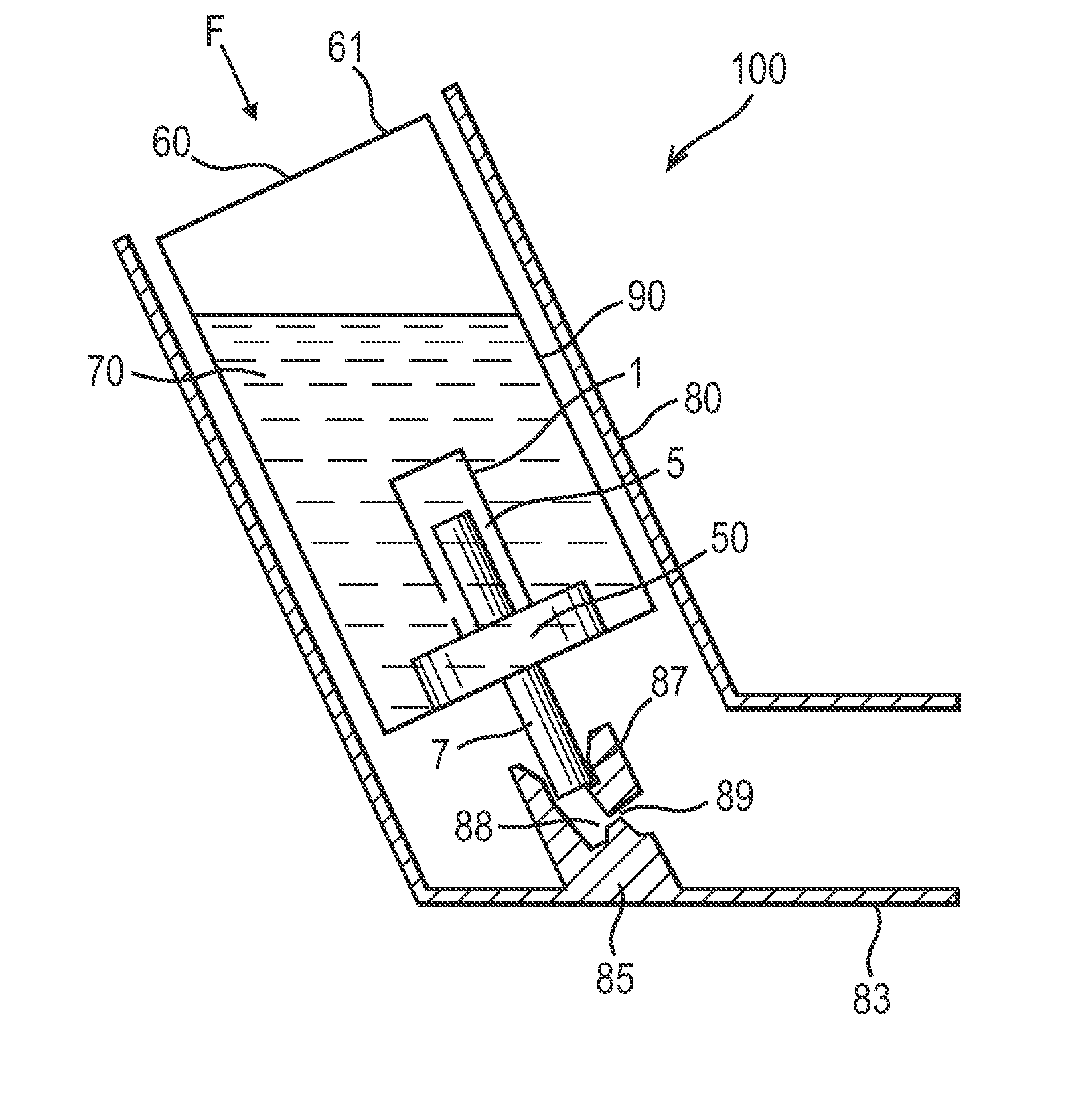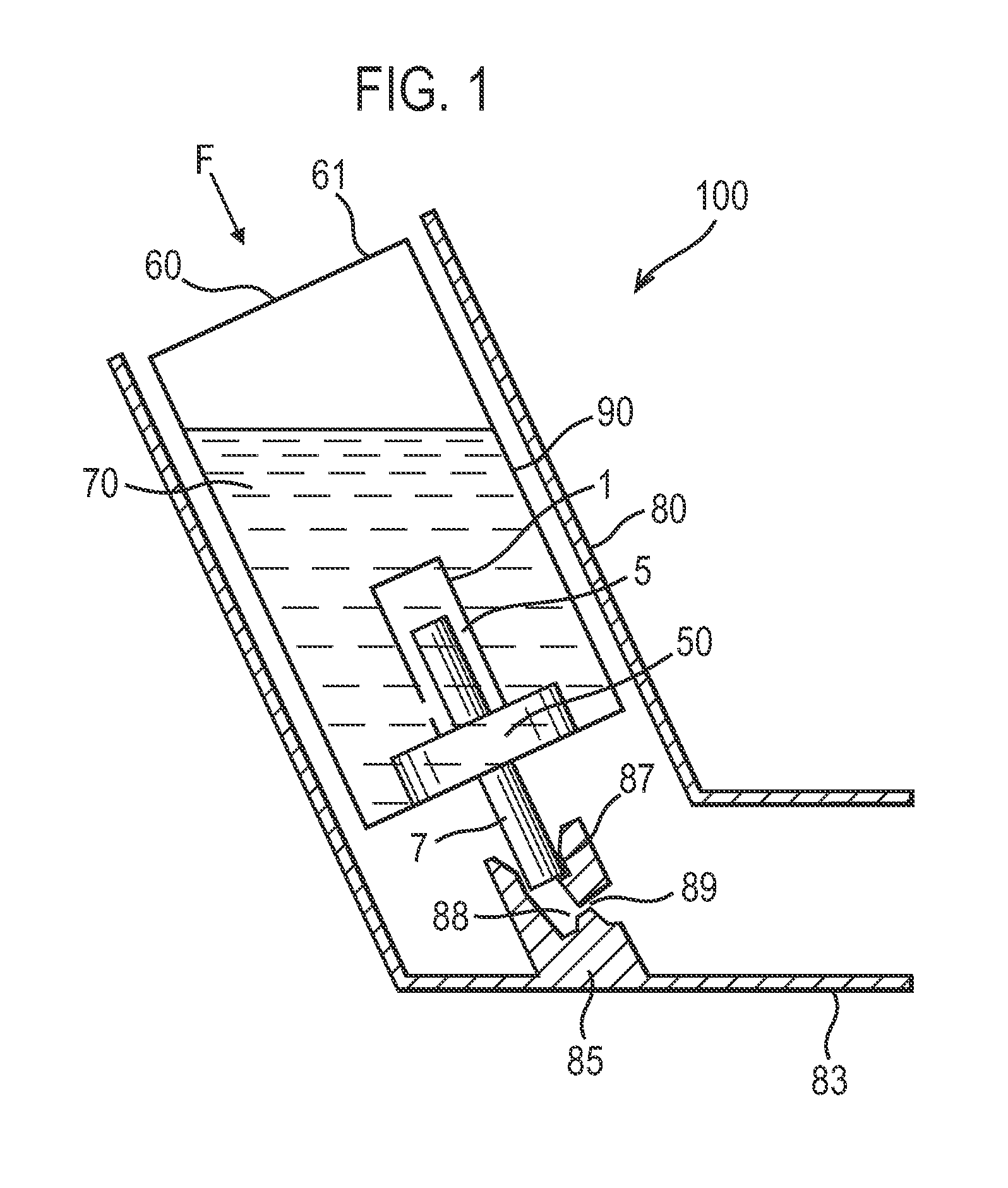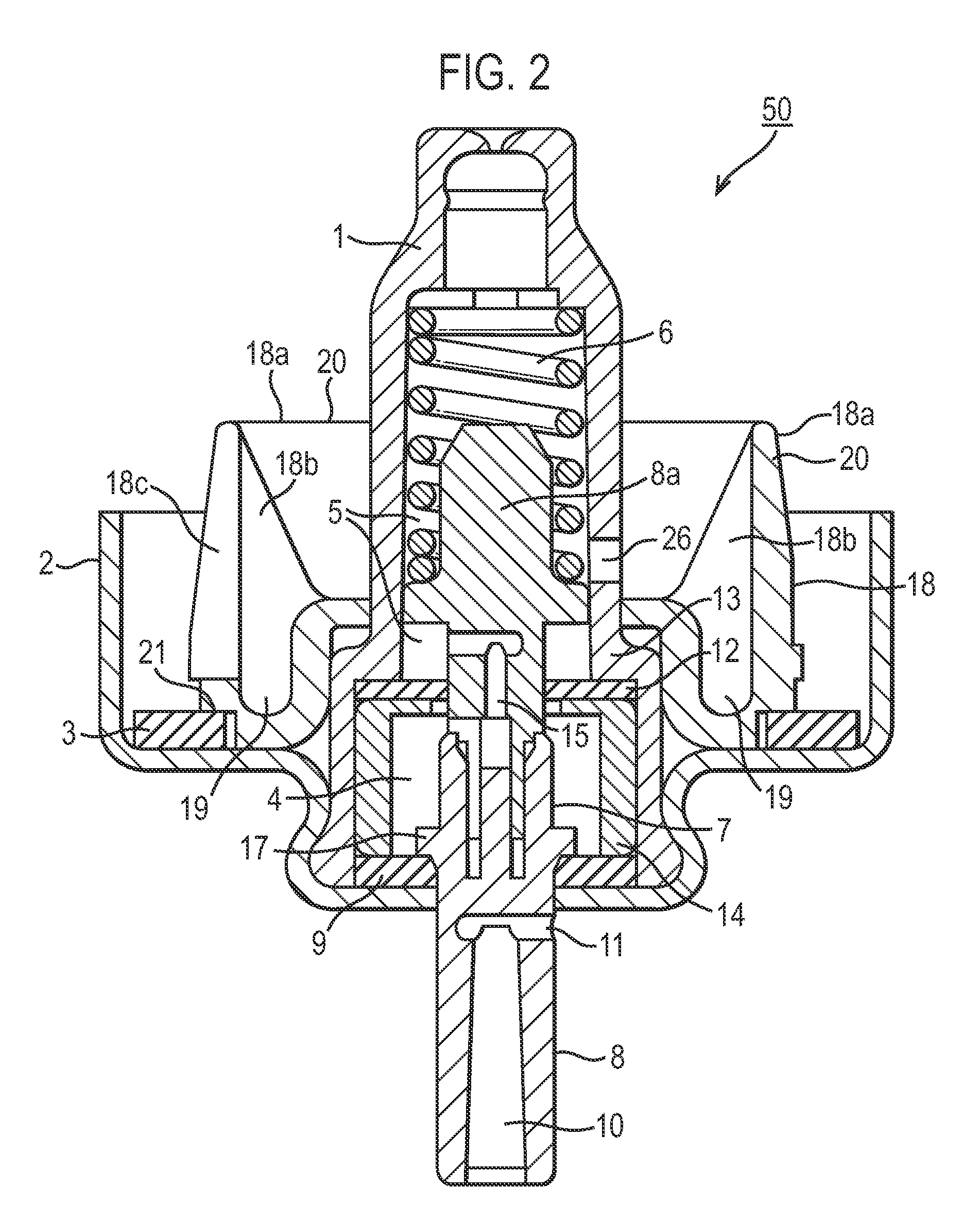Pressurized Metered Dose Inhalers
a technology of inhaler and metered dose, which is applied in the direction of inhalator, dispersed delivery, other medical devices, etc., can solve the problems of loss of consistency (instability) of fpm and stability of drug formulation in the system
- Summary
- Abstract
- Description
- Claims
- Application Information
AI Technical Summary
Benefits of technology
Problems solved by technology
Method used
Image
Examples
example 1
[0088]In this Example, the pMDI closed container systems in the respective batch used a metering valve assembly referred to as the “Mark A” or “Mk A” valve. Unlike the valve shown in FIG. 2, the Mk A valve has a valve body 1 with 3 short slots instead of orifices 26, as will be understood by reference to FIG. 1 of U.S. Pat. No. 6,170,717 supra. The Mk A valve components are made of the following materials:
Component (Ref. No. in FIG. 2)MaterialValve body (1)AcetalSpring (6)Stainless steelLower valve stem (8)AcetalUpper valve stem (8a)Acetal and PTFE blendFerrule (2)AluminiumSleeve (14)AcetalStem seals (9, 12)EPDM rubber*Gasket (3)EPDM rubber*Ring (18)See below*EPDM rubber = ethylene-propylene diene monomer rubber
[0089]In this Example, there were 3 sub-batches called “Mk A Actl”, “MK A Cntl” and “Mk A Des”. In the Mk A Cntl sub-batch the ring 18 was made from nylon with six slots 18c. The Mk A Actl sub-batch used an acetal ring 18. The Mk A Des sub-batch used a ring 18 made from a des...
example 2
[0112]In Example 2, the components of the metering valve assembly of the pMDI closed container system batch were (with the exception of control sub-batch C infra) made of the following materials:
Component (ref. no. in FIG. 2)MaterialValve body (1)Acetal (two orifices 26)Spring (6)Stainless steelValve stem, upper + lower parts (8, 8a)AcetalFerrule (2)AluminiumSleeve (14)AcetalStem seals (9, 12)Nitrile rubberGasket (3)Nitrile rubberRing (18)Nylon (six slots 18c.)
[0113]This is hereinafter referred to as the “Mark B” or “Mk B” valve. The Mk B valve has a valve body 1 with orifices 26 as shown in FIG. 2, not slots as in the Mk A valve used in Example 1.
[0114]Table 2 gives details of the sub-batches for Example 2. Prior to filling, into the canister of each sub-batch (other than control sub-batches B and C) there was inserted a lozenge made from the materials given in Table 2.
[0115]In more detail, the lozenge of each X series sub-batch was of a solidified blend composition of a channeling...
example 3
[0127]Example 3 was carried out with the sub-batches referred to in Table 3. The X series, AC and PC sub-batches each comprised 50 closed container systems utilising valves corresponding to the Mk B valves used in Example 2, other than the gathering ring 18 being made from different desiccant-entrained and control plastics materials as identified in Table 3. The X1763 sub-batch used a ring made from the X1763 blend of Example 1. The X1971 sub-batch corresponded to the same sub-batch of Example 2. The X2010 and X2011 sub-batches used a desiccant-entrained material of the type defined (CSP Technologies, Auburn, Ala., USA) having the same materials as X1971, but in different mass ratios. The X2012 and X2013 sub-batches used a desiccant-entrained material of the type defined (CSP Technologies, Auburn, Ala., USA) having the same polypropylene and molecular sieve materials as the other X series sub-batches, but the channeling agent was PEG of a much higher average molecular weight. The ri...
PUM
 Login to View More
Login to View More Abstract
Description
Claims
Application Information
 Login to View More
Login to View More - R&D
- Intellectual Property
- Life Sciences
- Materials
- Tech Scout
- Unparalleled Data Quality
- Higher Quality Content
- 60% Fewer Hallucinations
Browse by: Latest US Patents, China's latest patents, Technical Efficacy Thesaurus, Application Domain, Technology Topic, Popular Technical Reports.
© 2025 PatSnap. All rights reserved.Legal|Privacy policy|Modern Slavery Act Transparency Statement|Sitemap|About US| Contact US: help@patsnap.com



